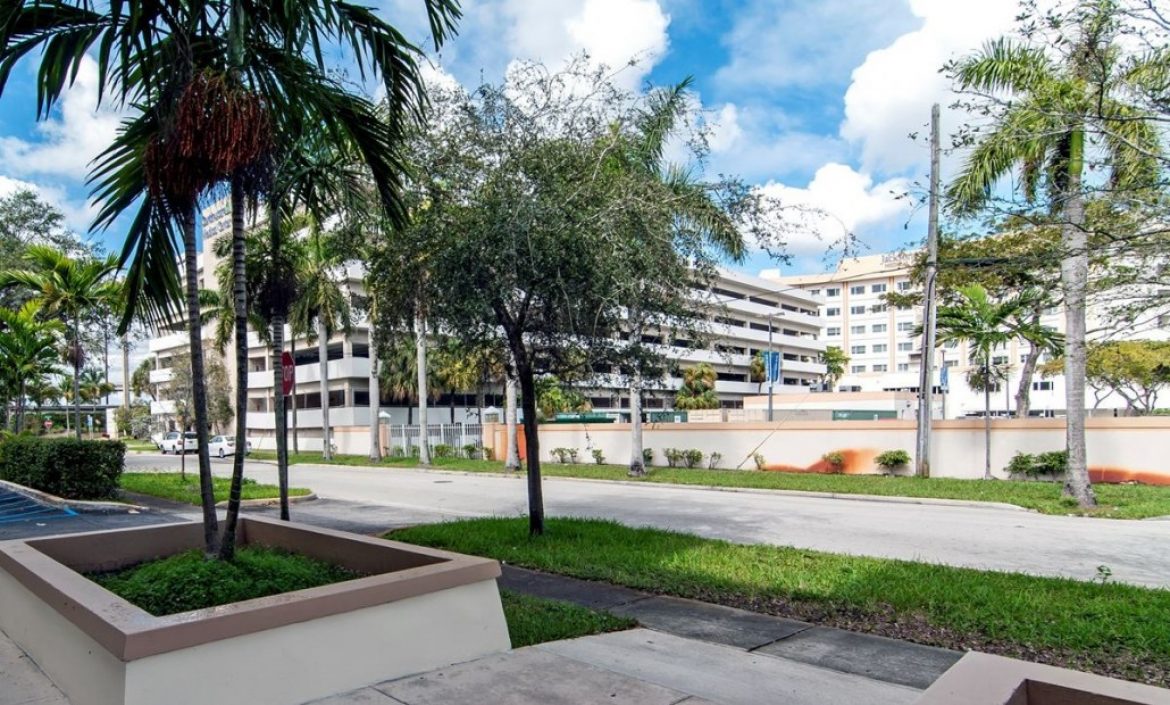Of the five main outpatient facility types, medical office buildings (MOBs), urgent care centers and ambulatory surgery centers (ASCs) have the most positive outlooks and futures in the healthcare and healthcare real estate (HRE) sector.
On the other hand, the outlook is not quite as positive for micro-hospitals, which have a “moderate” outlook, and freestanding emergency departments (FEDs), which have a “negative” outlook. That’s according to a scorecard, if you will, compiled by well-known healthcare research and consulting firm The Advisory Board Co., which is based in Washington, D.C., and is part of Eden Prairie, Minn.-based Optum.
Providing insights into The Advisory Board’s rankings and outlooks for the various outpatient property types was the company’s Fred Bayon, managing director. He did so during a 100-minute presentation that covered a wide range of topics affecting the healthcare sector during The Colliers National Healthcare Conference, held Sept. 12-13 at the Hyatt Centric Chicago Magnificent Mile.
“My job with The Advisory Board is to travel around the country and meet with our members … hospitals and health systems, C-suite executives and the health system boards of directors and let them know what’s happening in the healthcare market place, what they need to be strategizing about and be aware of concerning healthcare policies and healthcare changes and issues,” Mr. Bayon told the audience.
Near the end of his presentation, which included plenty of insight into current healthcare policy and disruptors to the status quo, Mr. Bayon gave the firm’s outlook on the various property types.
As has been the case for several years, The Advisory Board is most optimistic about the short- and long-term prospects for MOBs. The rise of MOB development and investment has occurred in large part because they allow hospitals and health systems the best and most economical way to enter new markets, to protect market share, to provide convenient access to patients and to help facilitate the coordination of care.
“The MOB market continues to be a positive, intriguing play for hospitals, health systems and investors,” Mr. Bayon told the audience. “Those players are and will remain interested in MOBs for years to come because they “are conveniently located, essentially for Medicare patients and commercially insured patients. Health systems do not want their patients to have to come downtown, they don’t want you to come into the maze that is the big hospital campus. Instead, they want you to go somewhere where there is parking and where there is a pleasant atmosphere, because that’s where they think they can drive volumes.”
The Advisory Board gives its next highest ranking to ASCs — which, even though they carry some risk because of the lower-profit margins they deliver — will continue to experience increased volumes in years to come, he said.
Mr. Bayon noted that volumes in ASCs are expected to increase by nearly 28 percent by the year 2027, driven in large part by ongoing policy changes by the Centers for Medicare and Medicaid (CMS) that will “reimburse Medicare procedures done in ASCs. For example, total knee (replacement) and some cardiac procedures” have recently been added to the list of procedures that, when done in ASCs, will be reimbursed by Medicare.
Also receiving a positive score, or outlook, from The Advisory Board are urgent care centers, which the firm is “pretty bullish on,” Mr. Bayon said.
“More and more health systems are looking at urgent care centers and having some sort of investment in them, or some sort of partnership in sites across the United States,” Mr. Baynon said. “We still see these growing rather rapidly and for us, this is becoming a primary care alternative that can alleviate some of the capacity crunch for primary care in some markets.”
Even though The Advisory Board is not as bullish on FEDs and micro-hospitals, Mr. Bayon noted that the firm is “neutral” on the facility type, as those that are placed in the right locations can provide benefits for health systems, especially when they are expanding into new markets.
“Micro hospitals, the eight- to 12-bed hospitals can help a system bring together some inpatient and outpatient services, with core services being acute care, emergency care, pharmacy and additional services,” Mr. Bayon said. “(Micro-hospitals) continue to be a big, big play in the Texas marketplace, but we can see this growing in other markets as well. What’s interesting about micro-hospitals for developers and healthcare providers is that these facilities are not subject to site-neutral payments, meaning they can bill at inpatient rates and then they can generate their own on-campus or off-campus definition, meaning they can put outpatient services within 250 yards of those micro-hospitals and not be subject to a site neutral rate. For us, I would say that right now we are pretty neutral on micro-hospitals.”
The Advisory Board gives its lowest ranking, or outlook, to FEDs, which, in some instances,
“One of the things to keep in mind is that government payers do not reimburse freestanding emergency departments, but they are dotted across the United States and there are some hospital systems that believe such facilities are something around which they can build more services over the longer term,” Mr. Banyon said.
The Advisory Board, however, has a negative outlook on the facility type in large part because “they could drive unnecessary utilization if we see a preponderance of them.
“And I think that CMS could look at decreased reimbursement to FEDs moving forward,” Mr. Banyon continued, “and this is not to distinguish between an ED in a hospital setting and a freestanding setting. That’s a big risk for health systems.”
Source: HREI



